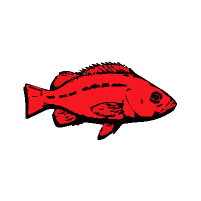Cite RMPC Data & Documents
Citation
Referencing information in a publication serves several purposes:
- it gives proper credit to the source’s author(s)
- it lets readers know that you are not making things up, and that you have consulted authoritative sources for your information.
- it provides a path for readers to retrace your steps, should they wish to do so. Thus, enough information must be provided to allow a person to find the source.
- the referencing information provides a framework for the logical progression of the arguments you are making in your report. Therefore, the more accurate and complete your citations are, the more they benefit your readers and grant higher credibility to your writing.
Citing documents from the World Wide Web however, is tricky due to the dynamic nature of most websites. Citing web-generated data is even trickier. This is a developing art, and even though standards are being developed, the results may never be as clear or dependable as for published print sources.
The following are guidelines that we hope will help you. As with any citation guidelines, these will show you the elements required in your citation. The exact format may vary depending on where you are publishing your report.
Citing Documents from Regional Mark Processing Center
In the descriptions and examples given, the following order and format are used:
Author (if known), Title (if known) [type of document (optional) and medium]. Place of publication: Publisher, Date of publication [date of visit to site]. . Search parameters (if needed).
Suggested citation when referring to a specific document or publication located at the RMPC web site:
Pacific Salmon Commission’s Data Standards Work Group. Specifications and Definitions for the Exchange of Coded Wire Tag Data for the North American Pacific Coast, PSC Format Version 4.1. 2022. Portland (OR): Regional Mark Processing Center. URL:<https://www.rmpc. org/publications.html>.
Citing Regional Mark Information System Query Outputs
One of the primary features of the Regional Mark Processing Center website is its ability to generate output ‘on the fly’ through queries of the Regional Mark Information System (RMIS) and to allow the user to customize parameters. In these cases, just giving the URL for the site is of limited usefulness. The search parameters should also be included. Also in these cases, there is no author to cite; it is suggested that you cite Regional Mark Processing Center, Pacific States Marine Fisheries Commission as the publisher.
Suggested citation when referring to the RMIS database:
Regional Mark Information System Database [online database]. Continuously since 1977. Portland (OR): Regional Mark Processing Center, Pacific States Marine Fisheries Commission. URL:<https://www.rmpc.org>.
Suggested citation when referring to a specific data report retrieved from the RMIS database:
Bonneville Hatchery Brood Year 2000 Chinook Survival Analysis Report SA1. Regional Mark Information System Database [online database]. Continuously since 1977. Portland (OR): Regional Mark Processing Center, Pacific States Marine Fisheries Commission. [29 June 2022]. URL:<https://www.rmpc.org/cgi-bin/queryfrm.mpl?Table=recoveriesbyhatchery&tag_status=1& Version=4.1> Hatchery Location Name = ‘Bonneville Hatchery’; Brood Year = ‘2000’; Run = ‘3’; Tag Status = ‘1’.
Additional Notes
- Author – Sometimes you may have instead an editor, compiler, or the material may be an adaptation of someone else’s work – if so, indicate this in parentheses.
- Title – Do not make up a title – if what you are citing has no explicit title, use ‘(no title given).’
- Type of document – This is optional, use ‘graph,’ ‘map,’ ‘table,’ ‘photo,’ etc. if it helps.
- Medium – In all of these examples, the medium is ‘[online]’; for other resources you may be citing, you may need to use ‘disk’, ‘CD-ROM’, etc.
- Publishing information – This is not always easy to determine. For website-generated material, use Portland (OR): Regional Mark Processing Center. For other material, try to determine who published it and where they are located. Note that the publishing agency is not always the same as the author agency. If the date of publication is unknown, leave blank. If you are fairly certain about the publication date but it is not explicitly stated on the page, follow the date with a question mark.
- Date of visit to site – Use the format: [dd month yyyy] example: [12 July 2007]
- URL – Preface this with ‘URL:’ and include the address in < >, followed by a period.
